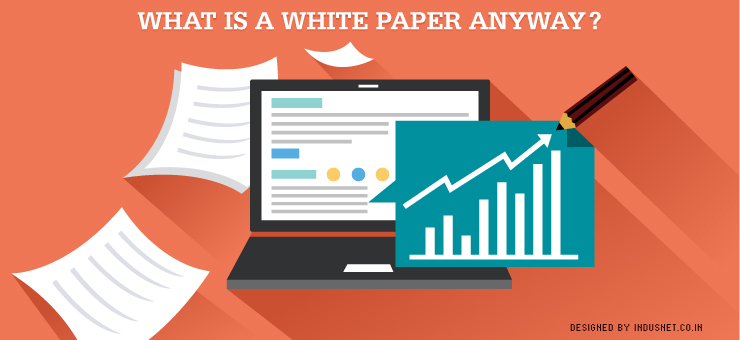
It is impossible to pass a day without hearing the term “whitepaper”. Most of the times, it is used in an incorrect manner and most of the times, companies continue to publish documents that they claim are “white papers”. A white paper originally referred to an authoritative document published or released by Government bodies. It referred to official reports that Governments used to publish from time to time with regard to making policies, forming opinions and even for advocating changes. Here lies the clue of what a white paper is.
Many Governments published documents that were known as white papers but were propaganda material. They tried to sell their ideas to people with the help of facts and figures so that they could persuade citizens to form an opinion and people adopt these changes.
Increasingly, corporations and companies began to adopt a similar strategy to convince their target audience using factually correct information. Currently, when we refer to a white paper in the context of B2B communication, we refer to documents that are released by corporations in order to persuade, make a point, develop a case and convince the reader to buy a product or service.
White papers today and content marketing strategy
The advent of Internet has only helped for content marketing to evolve. Today, a content marketing strategy isn’t complete without publishing whitepapers from time to time. Most companies spend a lot of time conducting research and gathering facts in order to publish white papers that help to sell their products.
For instance, a company that manufactures a particular type of wooden frame might make a case for its product by describing the problem of termites and how its wood is resistant to termite attacks. There is already a problem and the company tries to present the problem & find a solution, which usually is its own product.
White papers of today are marketing tools that are widely accepted and acknowledged. One does not need to pretend that a white paper isn’t trying to sell a product. It is a brutally honest document that relies on facts and figures, an existing problem & how that problem is solved by a product or service that it offers.
This sort of document helps companies to build credibility not only among clients and consumers but also among competitors. It helps when a different company cites your white paper while it creates its own. It is almost the way scientists cite each other’s works to make a point in their favor.
The format, length and style of a white paper
A white paper needs to, usually, be of at least 6 pages in length. It needn’t exceed 50 pages, according to an article published on Hubspot. It needs to contain illustrations, charts, references, and might even include case studies & interviews. Usually, a white paper needs to have a title page, table of contents, an abstract, an introduction, a section that describes a problem, a section that possibly could be a solution and a section that offers a solution in the form of a service or a product that the company offers. One could publish these white papers in a PDF format and the tone needs to be professional, well-written and thoroughly edited. You could also get a graphic designer to design the layout and format.
A white paper is different from an e-book
A white paper is neither an e-book nor a blog post. It is the most difficult and expensive document a company can publish. An e-book, on the other hand, can be more creative and less professional in nature. Always make sure that your white paper is well-researched and well-written. It needs to help you to gain credibility not only among clients and consumers but also within the industry peers.
Your reader needs to be able to recognize that you know what you are selling and what your product or service needs to be bought, with the help of honest facts & figures. If you are planning to publish a white paper, make sure that you seek the help of professional writers and editors who would be better able to guide you. After all, every white paper needs to be published only after careful planning.